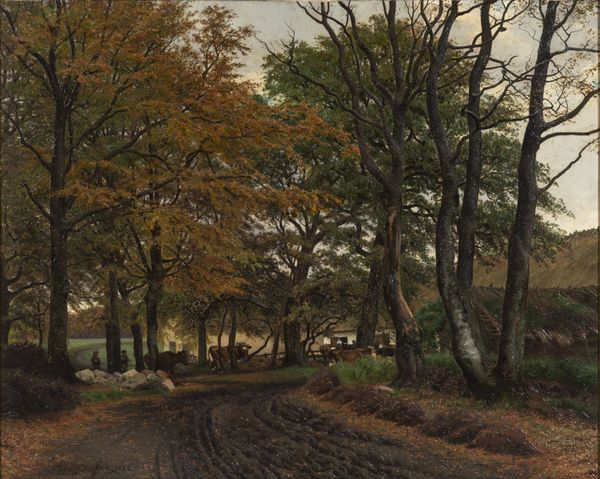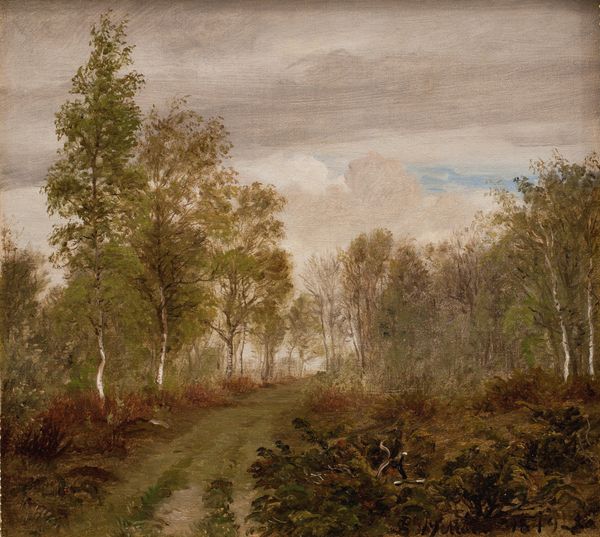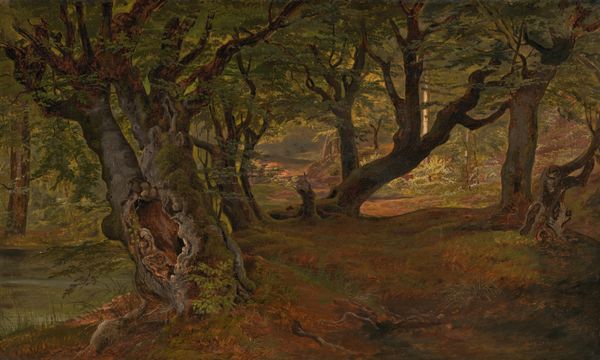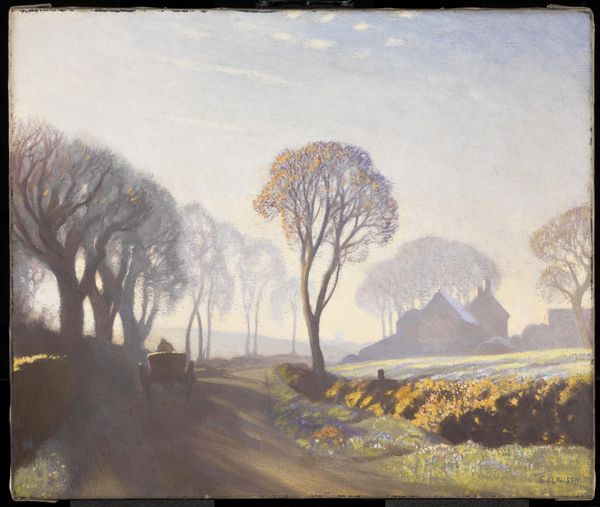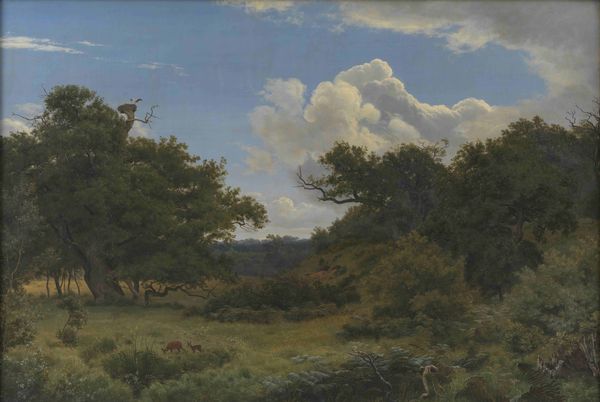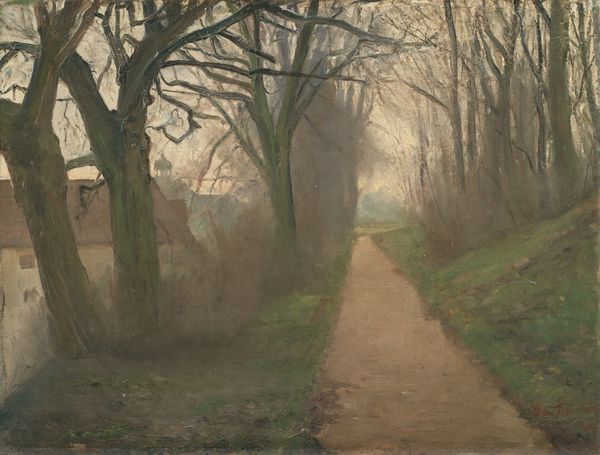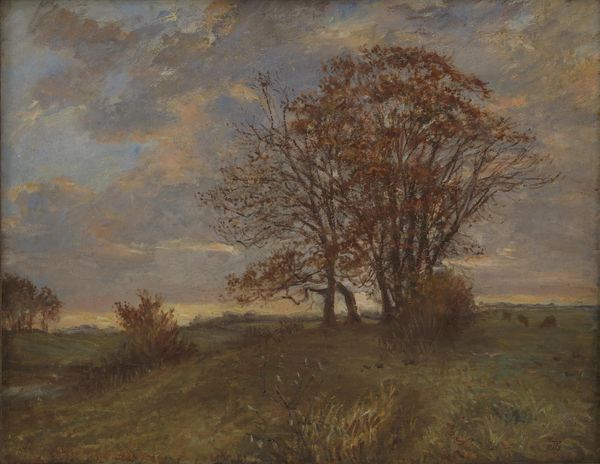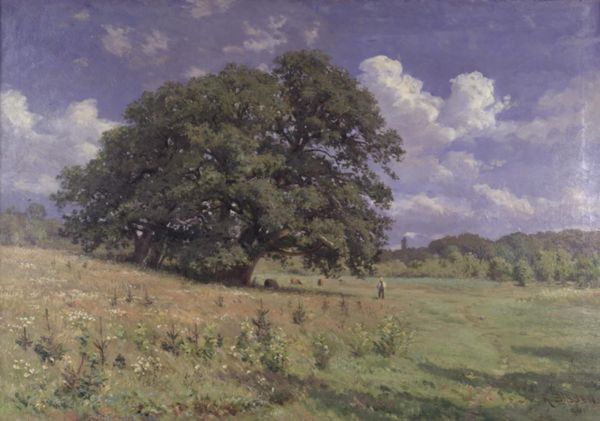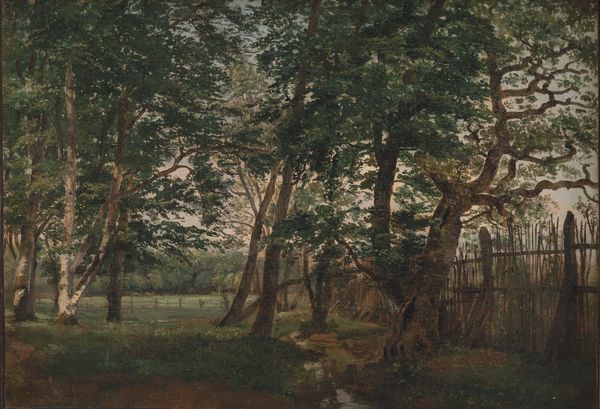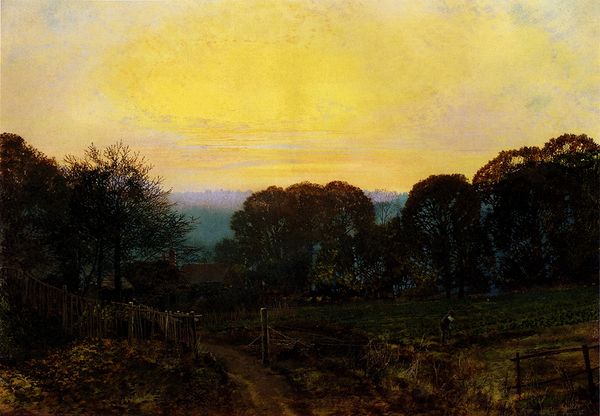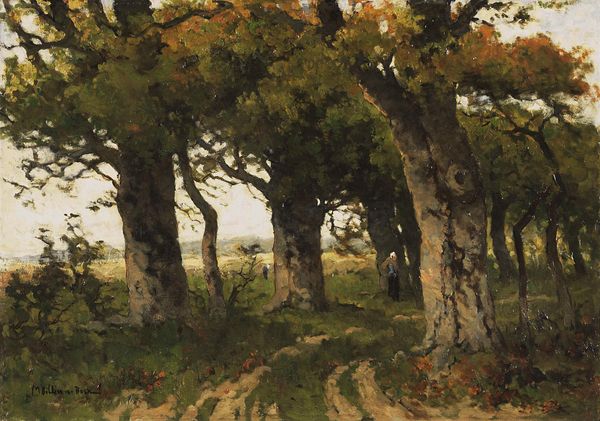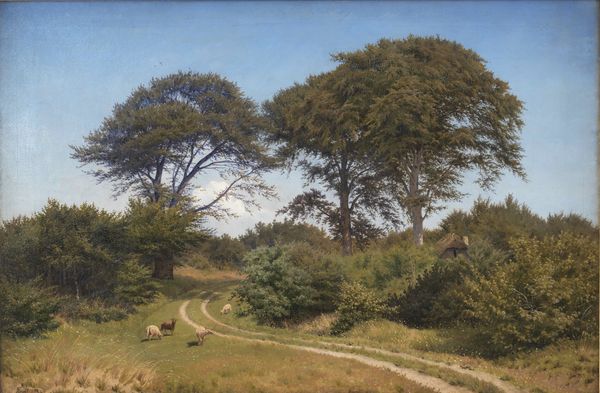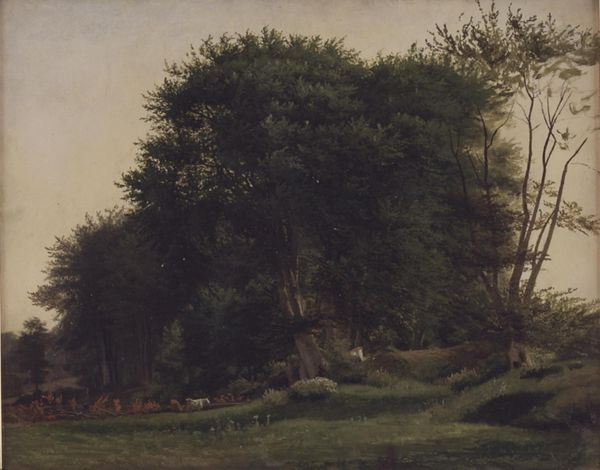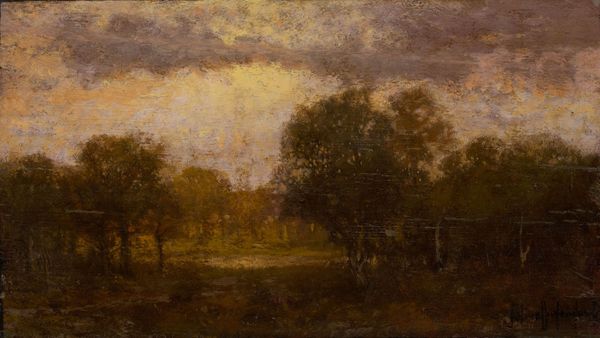
canvas
#
vast and haze
#
middle earth
#
natural shape and form
#
mother nature
#
countryside
#
nature colouring
#
nature
#
canvas
#
nature heavy
#
fog
#
mist
Dimensions: 58 cm (height) x 84 cm (width) (Netto)
Curator: Standing before us is Janus la Cour's 1863 canvas, titled "I udkanten af en egeskov en tidlig forårsmorgen"—"On the outskirts of an oak forest, an early spring morning." It resides here at the SMK, Statens Museum for Kunst. Editor: It's incredibly atmospheric, almost like a stage set. The bare trees reaching up feel quite theatrical, and the muted palette adds to the stillness. Curator: Indeed. The image is rich in traditional symbols, harking back to earlier Northern Romanticism. The forest itself is a potent symbol of the unconscious, the untamed aspects of the psyche, the transition, too. The early spring light signals rebirth, hope, perhaps even revelation after a period of darkness, an intimation of immortality in nature’s perpetual cycle. Editor: While I appreciate that interpretation, I'm more drawn to the physical handling of the paint. Notice how La Cour builds up the layers of grey and brown, almost blurring the distinction between earth and sky? It gives the painting a very grounded, material presence. How do you think La Cour achieved such a delicate gradation in those atmospheric effects? It’s clearly a close study of light. Curator: Likely through thin glazes, a meticulous process building tone upon tone. Consider, too, how his work reflects Denmark’s shifting cultural identity at the time. After the 1864 war, images of the Danish landscape took on heightened meaning, becoming a potent symbol of national identity and resilience in art. Editor: That resonates, yes. Thinking about the societal context – the agricultural reforms, the changing land ownership – the very *idea* of a "natural" landscape was being shaped by economic forces. It would be compelling to find out more about the specific pigments he would have used. How he would grind and mix his own paints would likely reveal an intimate connection to this particular place, how his making reveals something important about landscape painting as a form of labor. Curator: You make an interesting point, particularly with how La Cour connects the natural to the national consciousness. His painting style aligns with a cultural longing, or, as some may argue, the need to maintain one’s roots and remember. Editor: So, despite my interest in pigments and surfaces, I have gained some insight into the painting. There is an almost primal connection within the landscape.
Comments
No comments
Be the first to comment and join the conversation on the ultimate creative platform.
